Tools, parts and what you need for guitarmaking
-
Tools & Jigs
-
Tools
- Fretting Tools (Base)
- Pliers
- Sanding Blocks
- Brushes
- Files
- Routers
- Routing Templates
- Templates / Straight Edges
- Fretting Templates - Fret Scale Templates
- Clamps
- Knives
- Measuring Tools
- Tool Sets
- Reamer
- Keys, Wrenches
- Drill Jigs
- Saws
- Drill Bits
- Scrapers
- Bending Irons
- Other Tools
- Fret Hammer
- Fret Pressing
- Fretboard Protector
- Fret Bender & Tang Nipper
- ... More
- Jigs for Luthiers
-
Tools
-
Hardware & Parts
- Necks & Bodies
- Tuners
-
Hardware / Parts
- Truss Rods
- Carbon / Titan Reinforcement
- Trussrod Nuts
- Washer for truss rods
- Bridge Pins
- End Pins
- Bridges & Tailpieces E-Guitar
- Bridges & Tailpieces
- Covers
- Pickguards / Scratch Plates
- Strap Locks
- Bridge Accessories / Spare Parts
- Screws, Nuts, Washers
- Neck Attachement
- String-Ferrules
- Jack plates
- Control Plates
- String Retainer / String Trees
- knobs (pots/switch)
- Relic Parts
- ... More
- Nuts & Saddles
- Fret Wire
- Pickups & Electronics
- Materials & Supplies
- How-to
- Guitar Making
Shop Startpage Guitar Making Techniques Mammoth Ivory
The use of Mammoth Ivory
As most people know, the material of the elephant's front teeth is called ivory. These weir teeth of elephants are elongated incisors. They are covered with nerves almost to the tip and are therefore hollow from the root to just before the end of the tusk and relatively thin-walled at the base of the jaw. This horn, a mixture of phosphoric acid lime, cartilage tissue and moisture can be easily worked with saws, knives, files and polishers. It has a wonderful feel when finished, and its excellent tonal properties make it wonderful for saddles and bridges on plucked instruments. Since ivory is not arbitrarily available and is also sometimes weighed out with gold, these advantages unfortunately make the elephant together with its tusk an endangered species.
Already in Roman times the animals were used as fighting companions and the horn as a means of payment. One can imagine only too well that the Romans had wiped out almost all North African elephants because of this. And today it is still no different. Of course, they are no longer used for warfare, but their ivory is the trigger for cruel poaching and a lucrative worldwide black market. In the 19th century, nearly 10 million of the pachyderms lived in Africa; today, there are barely half a million. In order to protect elephants globally from extinction, the species was placed under species protection and thus any trade in elephant products - including ivory - is prohibited.
Please do not use elephant ivory - you support illegal poaching, about 80% of the ivory available on the world market was "produced" illegally. The remaining 20% have also died because of this!!!
Since ivory has fabulous tonal transmission properties and gives a wonderful feel, such materials are used for particularly valuable instruments. A normal bridge for a "New Yorker" can easily cost 180,00DM. So there you are - what can you do?
To use ivory nevertheless, one can use that, of an already extinct species. Because a little more than two and a half to three million years ago, the first mammoths came to Europe. A good 100,000 years ago, these had then finally adapted to the adverse weather conditions by fur and then came the great climate warming and the danze animal species died out about 10,000 to 25,000 years ago. Many of these mammoths are preserved in the eternal ice and their tusks come in relatively large numbers from Siberia or Canada. Occasionally, tusk fragments can also be found in our country. It is basically similar in workability to elephant ivory. But it is much harder and more brittle, because it has been in the ice for a longer time. This is the reason for cracks and discoloration of the material.
Mammoth ivory (fossil) has the following properties:
| Occurrence: |
Siberia, Canada, rarely Europe |
| Density: |
1.6 |
| Use: |
Saddles, ridges, deposits |
| Note: |
Ivory from mammoth does not fall under the Endangered Species Act. |
|
Not allowed to be hot or wet during the processing, since the material is HYGROPHIL |
I bought a tooth fragment and show here a few cuttings in the processing of the mammoth ivory.
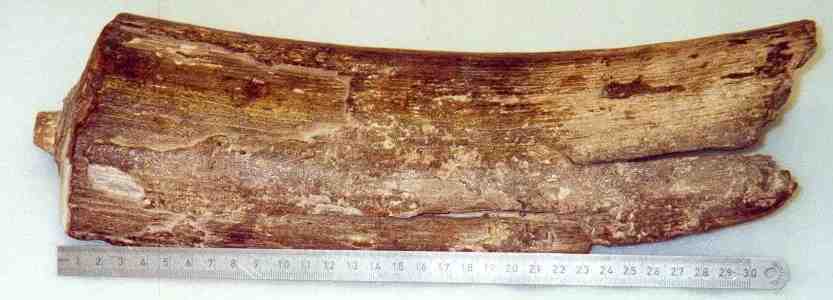 |
 |
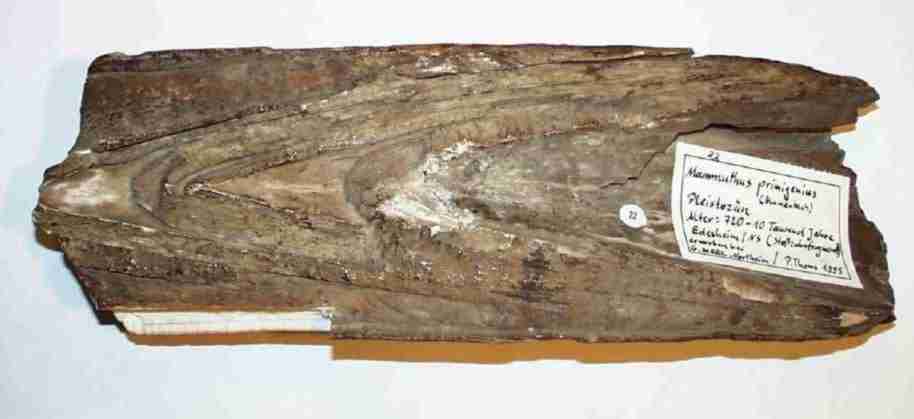 |
The piece is slightly longer than 30cm and weighs about 2kg. It is a half tooth and was cut from a larger tusk piece and professionally preserved. I couldn't judge from the outside what it looked like on the inside, so I milled out a piece with the Dremel. It's pretty soft and smells like strictly burnt hair or something. This piece was then cut into 3mm wide strips on the band saw, sanded parallel on the belt sander and cut to the final shape.
 |
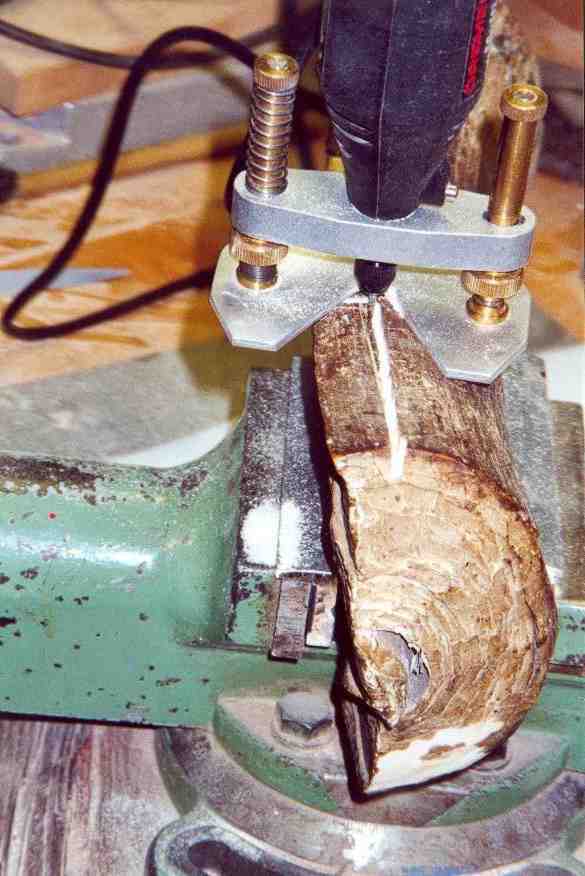 |
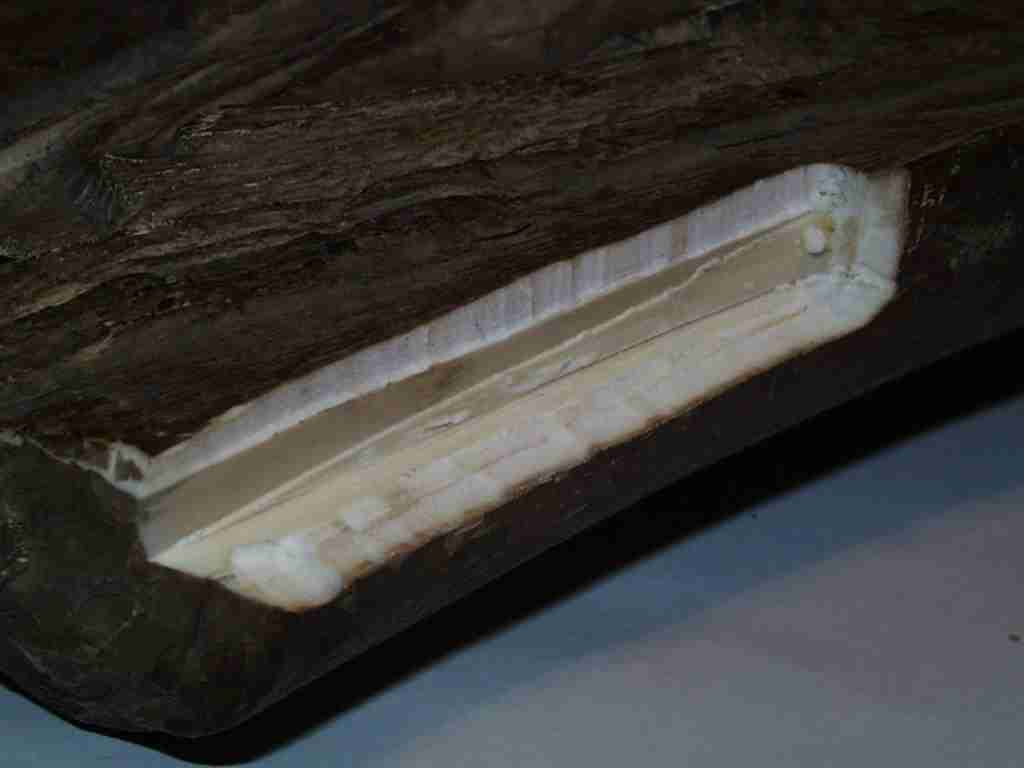 |
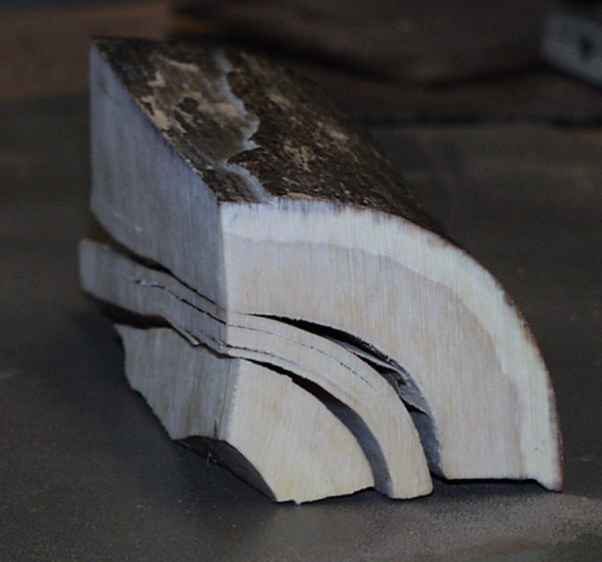 |
After the material turned out to be extremely usable (it can also be strark friable and not polishable), I cut up the fragment and processed it further. With sandpaper, file and polishing wheel, you can make a very supple guitar part.
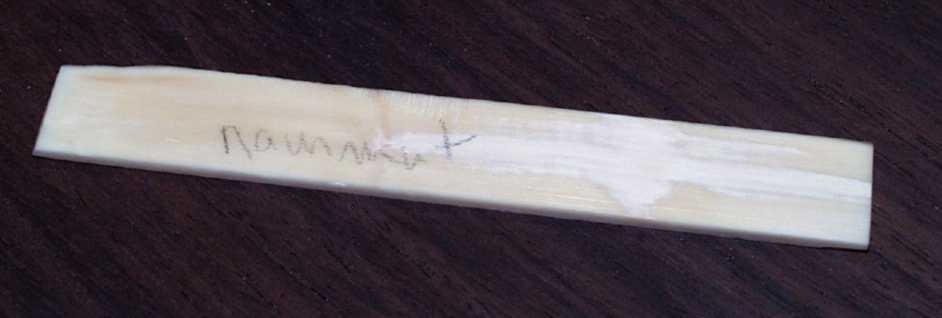 |
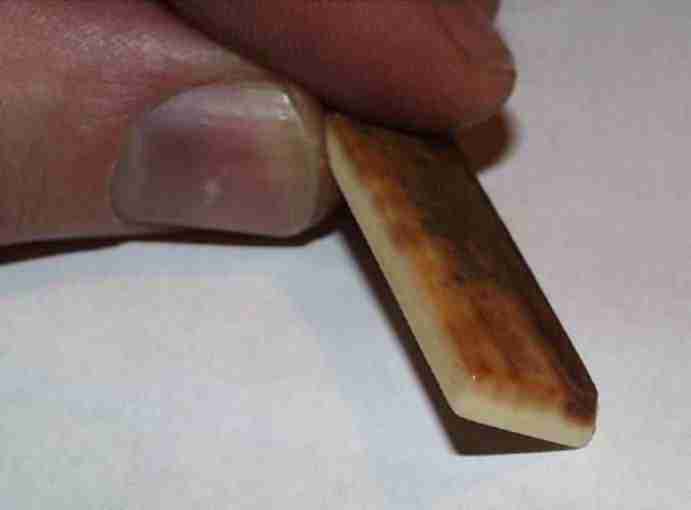 |
 |
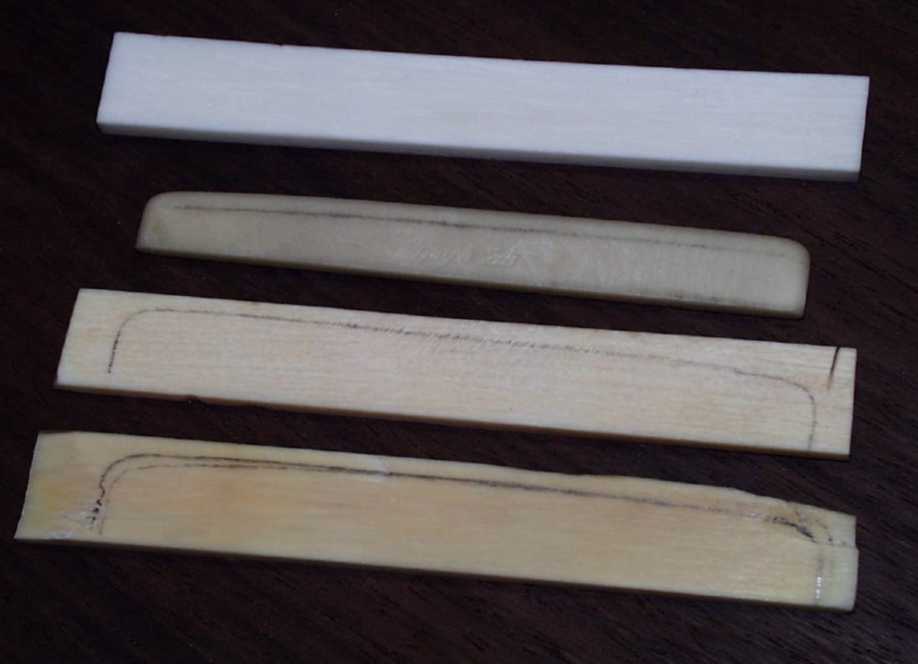 |
Would you like to visit a museum? German Ivory Museum Erbach
|
Rall Guitars & Tools Hauptstrasse Tel +49 (0) 8803-48856-56 Retail Shop: By appointment only |
Subscribe our Newsletter By subscribing our newsletter you accept our Privacy Policy and Terms and Conditions. |



